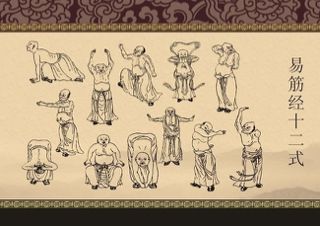Zeny
Blue Belt
When i was very young i trained a couple years in taekwondo, then life took over and i went abroad for university etc. When i was 30 years old my interest in martial arts returned and i trained some fuzhou white crane under a local master. After some persuasion from a close friend i joined a local taijiquan class. Taijiquan has been my only art ever since.
In my experience, a serious student of any martial art must clearly differentiate between external and internal martial arts. I have met many people who claim to practise internal arts or some hybrid art like wing chun and white crane but in reality what they are doing is external martial art with a bit of internal flavour. If one has a favourite technique like punching, throwing, leg sweep or joint lock, or even the taijiquan peng lu ji an, i would say that he or she is practising an external art.
What an internal art entails is this. After one acquires the external shape of the postures, the attention turns solely onto what happens in the inside of our body. For example if i do the taijiquan single whip posture, the internal balance of my body adjusts both consciously and subconsciously to allow me to perform the posture in a relaxed manner. Same goes for the transitions between the postures. After this 'internal adjustment' takes place for a few years, one's body becomes extremely balanced both outside and inside, both when standing still and moving.
In addition, after the body passes a certain threshold of 'sung', one acquires the ability to control the degree of tension in the body at will (i.e. solely through thought). When one reaches this stage where the body follows the dictates of the mind, the control of the body becomes refined and any response to external stimuli will become instantaneous. Because everything happens inside the body, the effect can only be felt (by other people), but not seen.
Hence, when an internal martial artist engages a person who has not trained in the internal arts, the internal martial artist can exploit all the 'internal imbalance' of that person. That is why sometimes an internal martial artist can be seen taking down a person seemingly without any effort.
So what martial art do you practise, external, internal or hybrid?
In my experience, a serious student of any martial art must clearly differentiate between external and internal martial arts. I have met many people who claim to practise internal arts or some hybrid art like wing chun and white crane but in reality what they are doing is external martial art with a bit of internal flavour. If one has a favourite technique like punching, throwing, leg sweep or joint lock, or even the taijiquan peng lu ji an, i would say that he or she is practising an external art.
What an internal art entails is this. After one acquires the external shape of the postures, the attention turns solely onto what happens in the inside of our body. For example if i do the taijiquan single whip posture, the internal balance of my body adjusts both consciously and subconsciously to allow me to perform the posture in a relaxed manner. Same goes for the transitions between the postures. After this 'internal adjustment' takes place for a few years, one's body becomes extremely balanced both outside and inside, both when standing still and moving.
In addition, after the body passes a certain threshold of 'sung', one acquires the ability to control the degree of tension in the body at will (i.e. solely through thought). When one reaches this stage where the body follows the dictates of the mind, the control of the body becomes refined and any response to external stimuli will become instantaneous. Because everything happens inside the body, the effect can only be felt (by other people), but not seen.
Hence, when an internal martial artist engages a person who has not trained in the internal arts, the internal martial artist can exploit all the 'internal imbalance' of that person. That is why sometimes an internal martial artist can be seen taking down a person seemingly without any effort.
So what martial art do you practise, external, internal or hybrid?
Last edited:

